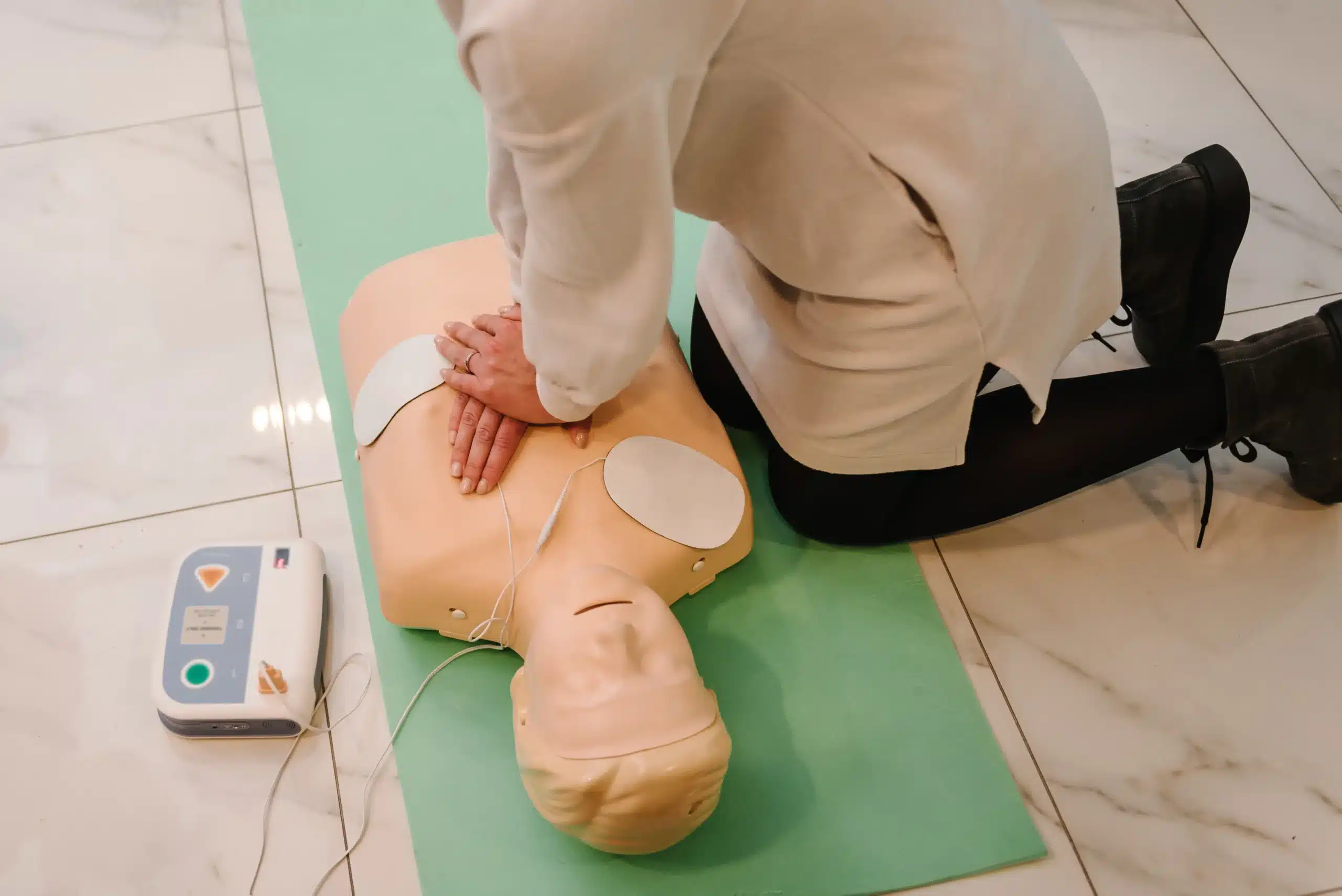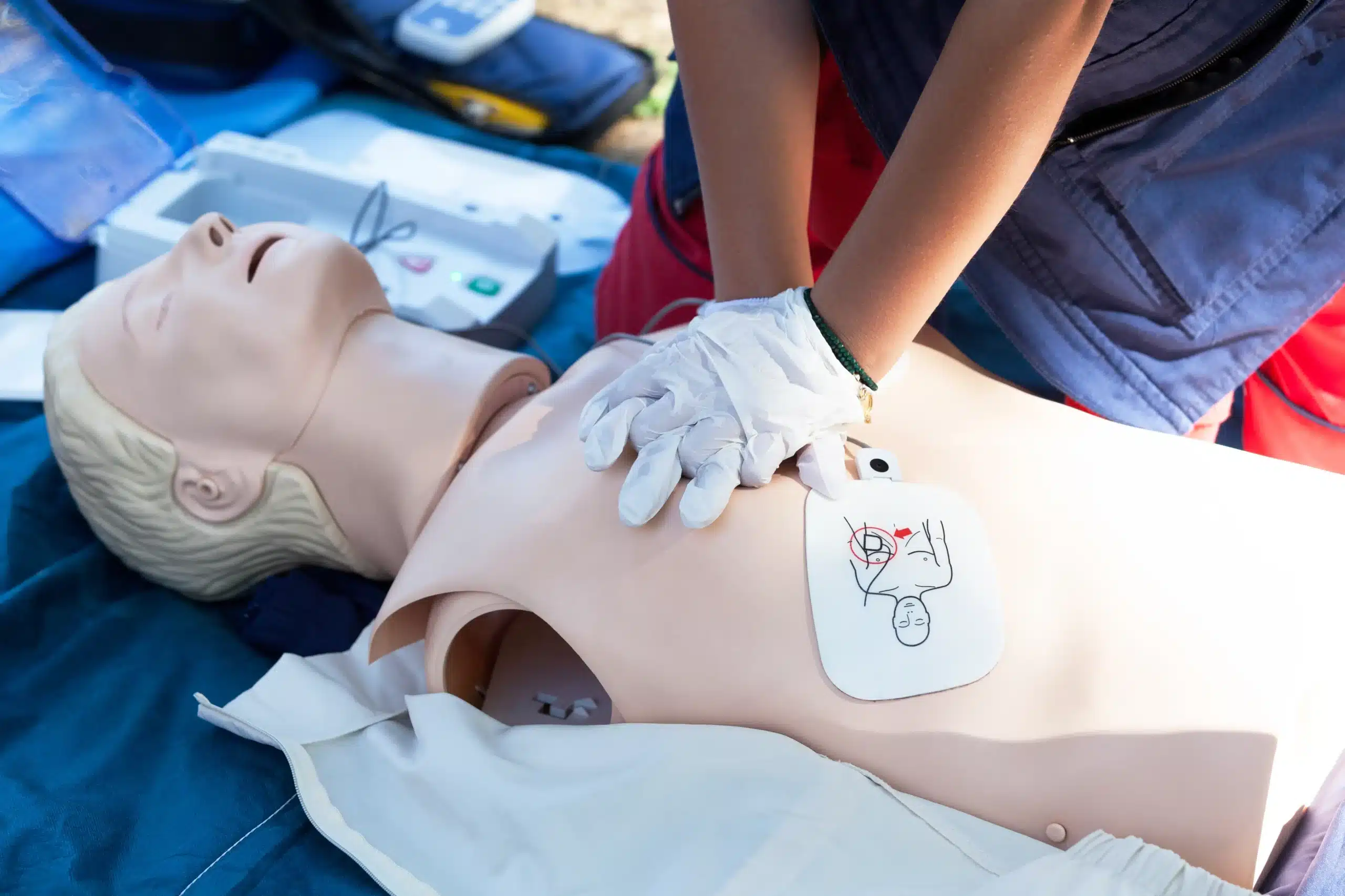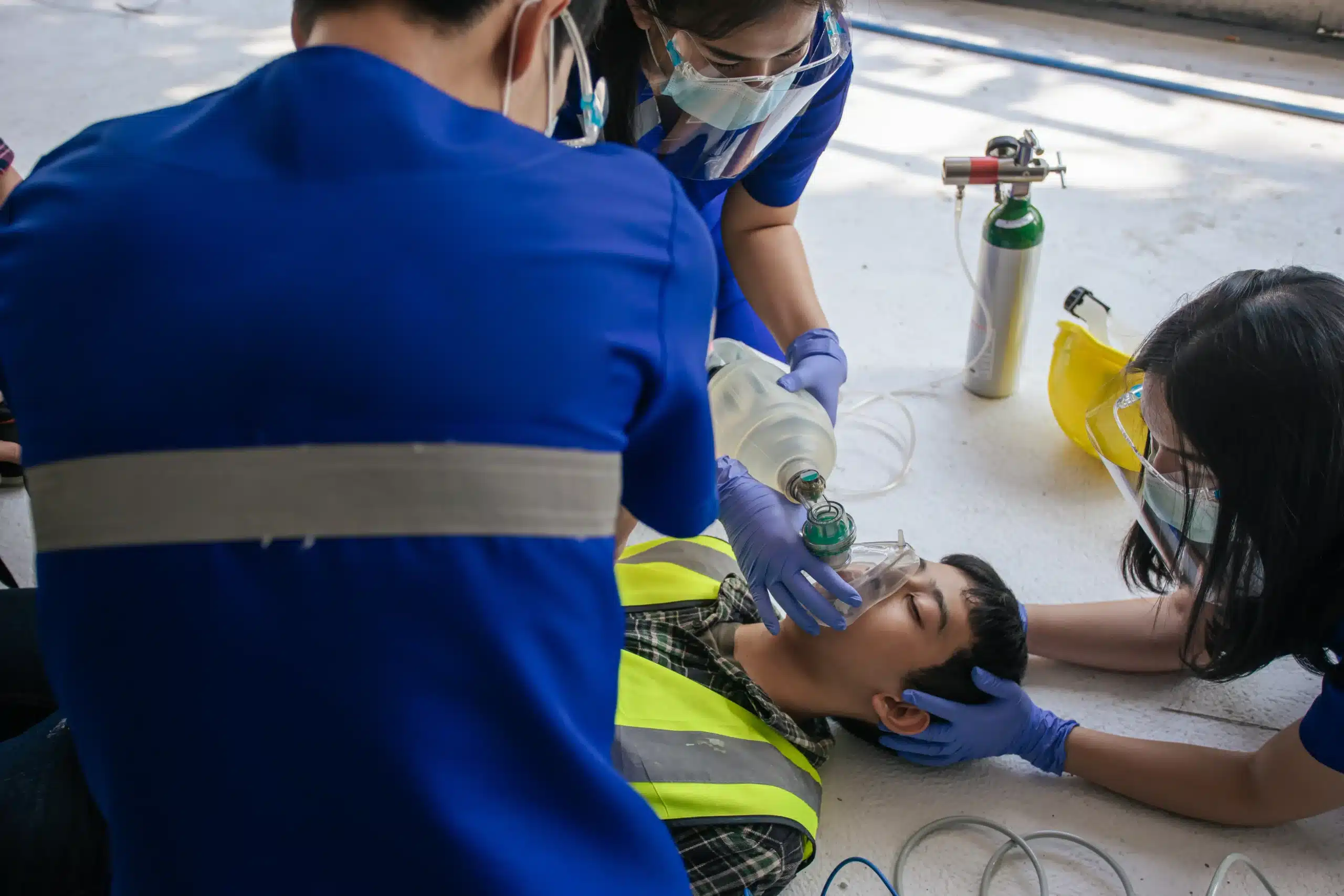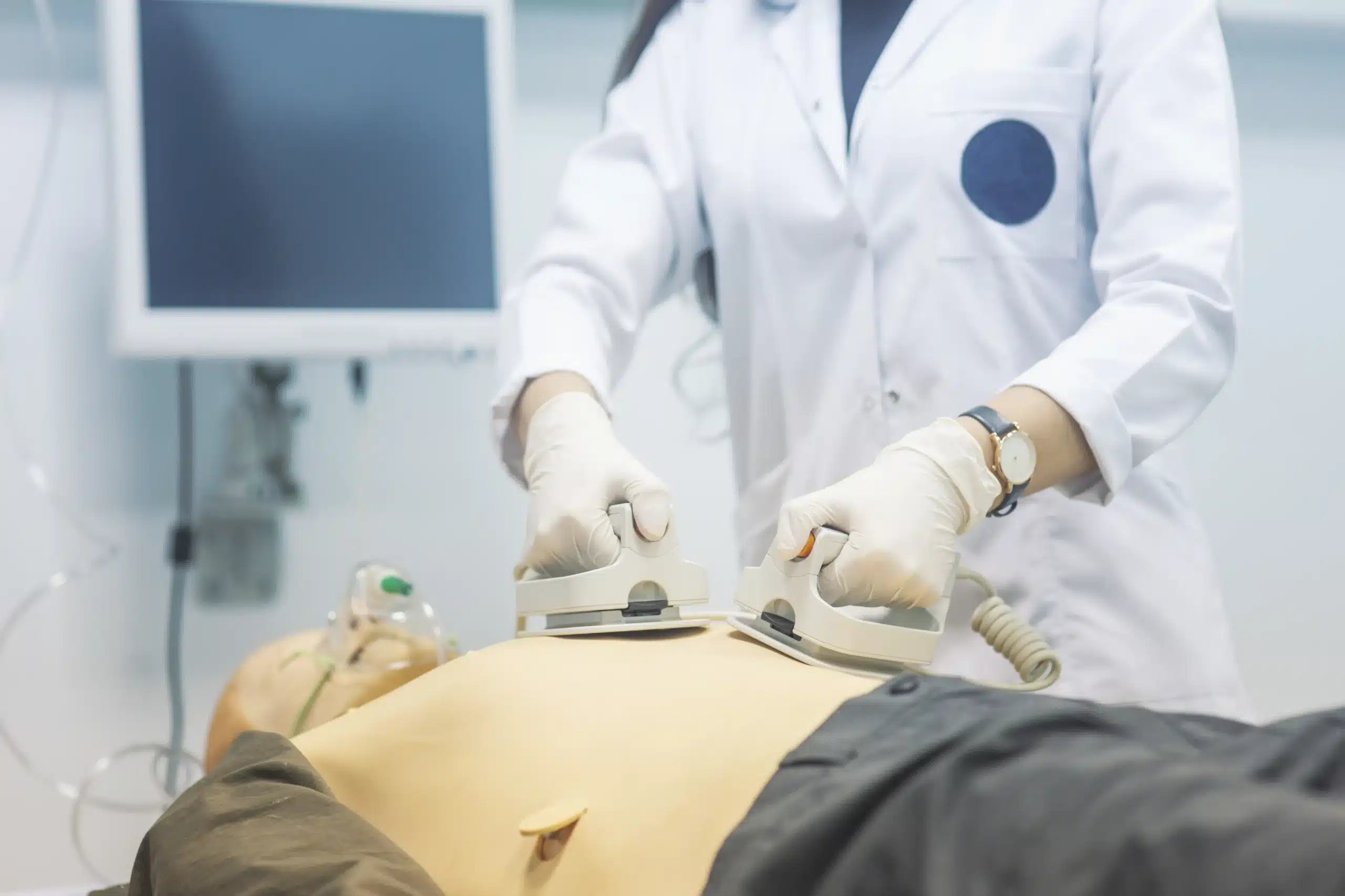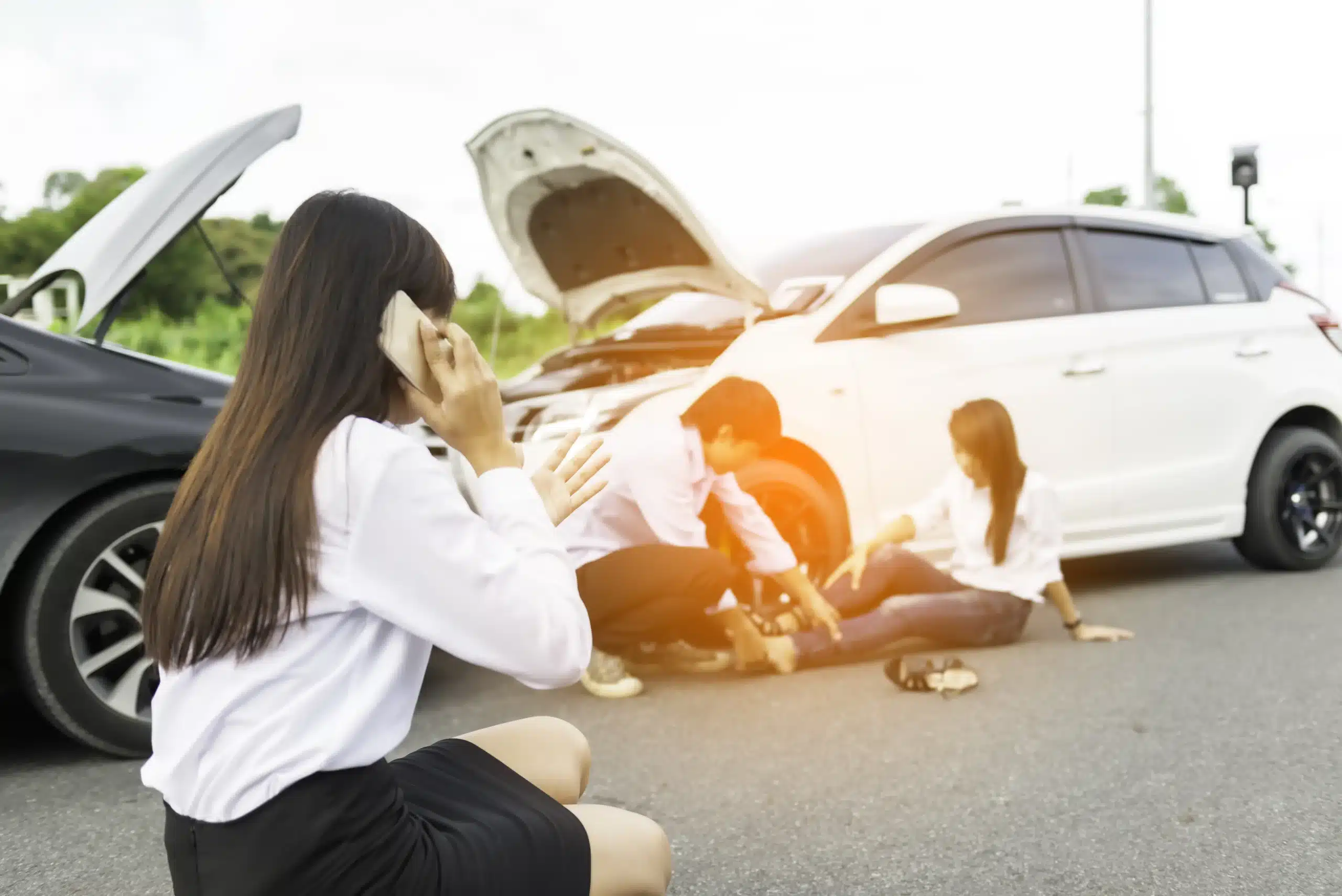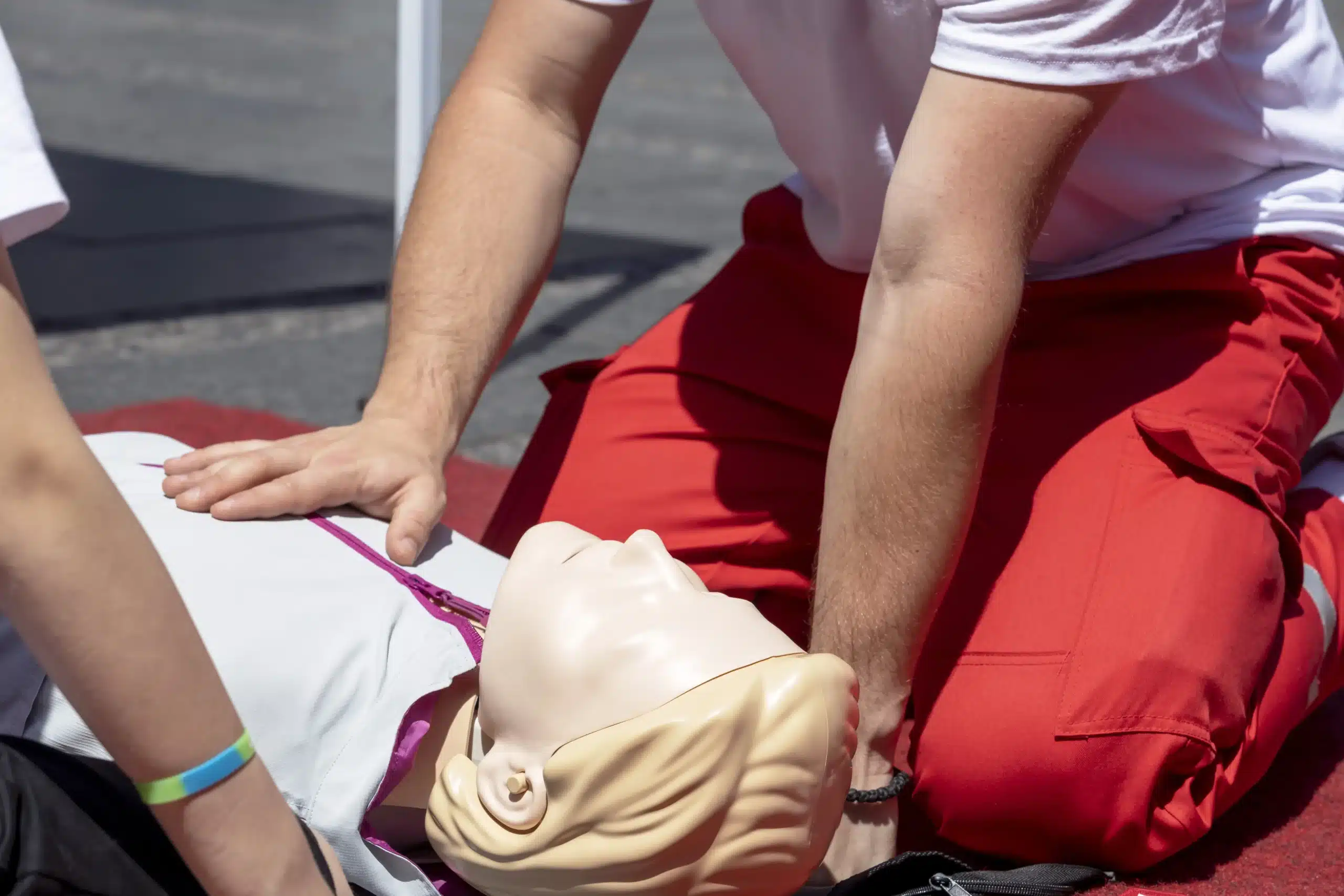Working in healthcare, you know how quickly situations can turn critical. Every second matters, and having the right skills can make all the difference. That’s why BLS for Healthcare Providers in Madera is so essential. It’s not just about checking a box for your job; it’s about equipping yourself with the knowledge and confidence to provide top-notch care when it matters most. This post breaks down everything you need to know about BLS certification in Madera, from where to find the best courses to what to expect during training. We’ll cover the key skills you’ll gain, the different course formats available, and how BLS certification directly impacts patient outcomes in Madera. Let’s get started.
Key Takeaways
- BLS certification goes beyond basic CPR: It provides healthcare professionals with the advanced skills to manage a range of emergencies, from cardiac arrest to airway obstructions, leading to better patient outcomes.
- Choose a BLS course that fits your lifestyle: Consider factors like your learning style, schedule, and preferred format (in-person, online, or blended) when selecting a course. Look for providers like Fresno CPR Classes that offer flexible options.
- Stay current with your BLS skills: Renew your certification every two years and consider additional training opportunities to maintain proficiency and ensure you’re always prepared to provide effective care.
What is BLS for Healthcare Providers?
BLS for Healthcare Providers is a critical certification designed specifically for healthcare professionals like doctors, nurses, EMTs, and other first responders. It goes beyond standard CPR training, equipping you with advanced life-saving techniques to handle a wider range of emergencies. Think of it as CPR+, encompassing everything in basic CPR and adding crucial skills for managing cardiac arrest, respiratory distress, and airway obstructions. This specialized training ensures you’re prepared to deliver effective care in high-pressure medical situations. It’s the industry standard for healthcare professionals, setting the bar for competency and effective patient care.
Key BLS Training Components
BLS for Healthcare Providers isn’t just about memorizing steps; it emphasizes critical thinking and adaptability. The curriculum covers standard resuscitation techniques, including CPR for adults, children, and infants, as well as AED use. But it also goes further, focusing on developing your decision-making skills and ability to work effectively within a team. This means learning how to assess a situation quickly, adapt to changing circumstances, and communicate clearly with colleagues during a crisis. BLS training also often covers special considerations, ensuring you’re prepared for a variety of scenarios you might encounter in a healthcare setting. You’ll gain experience practicing these skills in a controlled environment, building your confidence and proficiency.
Why BLS Matters in Healthcare
In healthcare, seconds can matter. BLS certification validates your skills and knowledge in providing immediate care during emergencies. Holding a BLS certification from a recognized organization like the American Heart Association demonstrates your commitment to the highest standards of patient care. It signifies that you’re equipped to respond effectively to life-threatening situations, from cardiac arrest and respiratory distress to other critical events. This training not only empowers you to save lives but also instills confidence in your abilities, allowing you to act decisively and efficiently when it matters most. For healthcare providers in Madera, Fresno CPR Classes offers comprehensive BLS certification courses. Ultimately, BLS training contributes to better patient outcomes and a safer healthcare environment for everyone.
Top Madera BLS Certification Providers
Finding the right BLS certification course can feel overwhelming, so we’ve compiled a list of reputable providers in Madera to help you get started. Each offers a slightly different approach to training, so take a look and see which one best fits your needs and learning style.
Fresno CPR Classes
Fresno CPR Classes offers a comprehensive BLS certification course approved by the American Heart Association. Their program combines online learning with hands-on skills testing, ensuring you grasp both the theory and practical application of life-saving techniques. The total cost, which covers online modules, the skills session, and your AHA BLS certification card, is generally around $80, making it a budget-friendly option. They also offer group discounts, which can be a great way to save if you’re training with colleagues or friends.
Central Valley Medical Education
Central Valley Medical Education provides a range of courses, including BLS certification in Madera. They use a blended learning model, combining online coursework with in-person skills practice. This allows for flexible scheduling while still providing the essential hands-on training needed to confidently respond to emergencies. They also offer ACLS, PALS, CPR, and First Aid training, making them a convenient resource for various certifications.
American Red Cross
The American Red Cross is a well-known provider of BLS certification classes. Their courses often use real-life emergency scenarios, giving you the opportunity to practice your skills in a simulated environment. This immersive approach can be particularly helpful for building confidence and preparing you to react effectively under pressure. Check their website for course schedules and availability in Fresno, which serves the broader Madera area. They also offer a variety of other health and safety courses, making them a valuable resource for the community.
Quality CPR First Aid
Quality CPR First Aid stands out for its mobile training services. They bring the training to you, specializing in hands-on, scenario-based learning. This is especially useful for groups or organizations in Madera looking to train multiple individuals at once. They cater to a variety of audiences, from healthcare providers seeking BLS certification to those simply wanting to learn general CPR and first aid. Their focus on practical application in a supportive environment makes learning these vital skills less intimidating.
BLS Course Formats: Pros & Cons
Choosing the right BLS course format depends on your learning style, schedule, and preferences. Let’s break down the pros and cons of each option so you can make an informed decision.
In-Person Training
In-person BLS training offers a hands-on, immersive learning experience. You’ll work directly with an instructor and fellow students, practicing skills like CPR and AED use on mannequins. This direct interaction provides immediate feedback and allows you to ask questions in real-time. The collaborative environment can also be beneficial, allowing you to learn from others’ experiences. If you thrive in a structured, interactive setting, in-person training might be a good fit. However, in-person classes require a greater time commitment, as you’ll need to travel to a specific location and adhere to a fixed schedule. Check out our in-person BLS courses to see if this option works for you.
Online Certification
Online BLS certification provides ultimate flexibility. You can complete the coursework at your own pace, anytime, anywhere. This format is particularly helpful for those with busy schedules or limited access to in-person training locations. You can review materials as needed and tailor your study schedule to your preferences. However, online certification typically lacks the hands-on practice crucial for developing muscle memory and confidence in performing BLS skills. While some online courses may offer virtual simulations, they don’t fully replicate the experience of working with physical mannequins and receiving real-time feedback. Consider supplementing your online training with hands-on practice.
Blended Learning
Blended learning combines the convenience of online learning with the practical application of in-person skills sessions. You’ll complete the theoretical coursework online at your own pace, then attend a shorter, in-person session to demonstrate your skills and receive feedback from an instructor. This format offers a balance between flexibility and hands-on practice. It’s a great option for those who prefer to learn independently but still value the benefits of in-person instruction. Blended learning can also be more cost-effective than traditional in-person training. Contact us to discuss group discounts for blended learning options.
What to Expect in a BLS Course
So, you’re ready to take a BLS course? Great! Knowing what lies ahead can make the whole process smoother and less intimidating. This section breaks down the typical BLS course experience, from the time commitment to the skills you’ll gain.
Course Duration & Content
BLS courses are designed to be efficient and manageable, even for busy schedules. The online portion typically takes between 1.5 and 3 hours to complete, which you can do from home. This online learning is followed by a hands-on skills testing session, usually lasting 30-40 minutes. Fresno CPR Classes offers skills sessions multiple times throughout the week, giving you flexibility. Many providers, including Fresno CPR Classes, use voice-activated manikins for a more interactive experience. This blended learning approach combines online convenience with practical application.
Key Skills & Knowledge
In a BLS course, you’ll learn the essential skills to respond to life-threatening emergencies. The curriculum covers recognizing and responding to cardiac arrest, providing high-quality chest compressions, delivering rescue breaths, and using an AED. You’ll also learn how to relieve choking. A BLS certification validates your training and shows you’re prepared for these situations.
Certification & Validity
Upon successful completion of the online portion and the skills testing, you’ll receive an American Heart Association BLS certification card. This card is typically included in the course fee and is valid for two years. After that, you’ll need to renew your certification. Having a current BLS certification demonstrates your commitment to maintaining these life-saving skills.
BLS Certification Costs in Madera
Getting BLS certified is an investment in your skills and ability to respond to medical emergencies. Understanding the costs associated with BLS certification in Madera will help you budget effectively and choose the right course.
Average Pricing & Inclusions
In Madera, the typical cost for BLS certification, including the online course, skills testing, and your American Heart Association BLS certification card, is around $80. This generally covers everything from the online portion to the hands-on skills session. Fresno CPR Classes offers a comprehensive BLS course package at this price point. For those interested in combined training, options like the RQI BLS HeartCode Complete course also fall within this price range.
Additional Costs
While the base cost of BLS certification covers the core components, there might be additional expenses. Textbooks are sometimes required and aren’t typically included in the course fee. These can range from $15.80 for an ebook to $18.50 for a paperback. Check with your chosen provider, such as Central Valley Medical Education, to confirm any extra costs before registering.
Value for Your Money
A BLS certification from the American Heart Association validates your skills and ability to provide immediate care during emergencies. It equips you with the training to respond effectively to life-threatening situations, from cardiac arrest to choking. This certification demonstrates your commitment to patient safety, making you a valuable asset in any healthcare setting. Many healthcare employers require BLS certification, so it’s a crucial step in your career. Consider it an investment in your professional development and your ability to make a difference.
Choosing the Right BLS Course
So, you’re ready to get your BLS certification—awesome! Choosing the right course can feel a little overwhelming with so many options. This section breaks down key factors to consider so you can find the perfect fit.
Factors to Consider
First, make sure the BLS certification comes from a recognized organization, like the American Heart Association (AHA). AHA certification carries weight and validates your skills in handling emergencies. It shows you’re prepared to respond to cardiac arrest, respiratory distress, and other critical situations. Beyond the certifying body, think about your learning style. Do you prefer a classroom or the flexibility of online learning? Consider what helps you learn best.
Compare Provider Offerings
Different providers offer various courses and formats. Compare what each provider offers. For example, some providers might specialize in HeartCode BLS, which blends online learning with hands-on practice. Others, like Fresno CPR Classes, offer a range of AHA certifications, including BLS, ACLS, and PALS. Consider which provider best aligns with your career goals if you plan to pursue further certifications. Also, check if they offer group discounts, which can save money if you’re training with others.
Scheduling & Flexibility
Finding a course that fits your schedule is essential. Look for providers with flexible scheduling. Online BLS courses are often a good choice for busy professionals because of the self-paced learning. Pay attention to the skills testing component. Some providers offer testing throughout the week with extended hours. See if the provider offers daily classes or only on certain days. Finding a program that works with your schedule will make the process much smoother.
Maintain Your BLS Certification
Keeping your BLS skills sharp is crucial for any healthcare provider. While your American Heart Association BLS certification is valid for two years, the medical field is constantly evolving. Staying up-to-date on the latest guidelines and best practices ensures you can respond effectively to emergencies and provide the best possible care. Our low price guarantee makes renewing your certification with us easy and affordable.
Renewal Process & Requirements
Renewing your BLS certification typically involves completing a refresher course before your current certification expires. This refresher covers updated guidelines and reinforces essential skills. Check with your certifying organization, such as the American Heart Association, for specific renewal requirements. Don’t let your certification lapse—plan and schedule your renewal in advance. We offer daily classes in over 60 cities, making it convenient to fit renewal into your busy schedule.
Continuing Education
Even with a valid certification, ongoing education and practice are key to maintaining BLS proficiency. Consider participating in additional training, workshops, or simulations to hone your skills and stay familiar with advancements in emergency care. Regular practice builds confidence and improves your response time in critical situations. Fresno CPR Classes offers RQI classes to help you maintain your skills. We also offer group discounts for healthcare facilities looking to train their staff. For any questions about maintaining your BLS certification or finding the right course, contact us.
Common BLS Training Misconceptions
It’s easy to get caught up in misconceptions surrounding BLS training and certification. Let’s clear up some common myths and get you on the right track.
Debunking Myths
One persistent myth is that Basic Life Support (BLS) certification is only for emergencies. While BLS skills are undeniably crucial in crisis situations, they also play a vital role in routine patient care. Think of it as a foundational skill set for any healthcare provider, used to prevent emergencies from escalating and maintain patient safety. Another misconception is that BLS training is exclusively for healthcare professionals. Anyone can benefit from BLS training, including teachers, coaches, and even stay-at-home parents. Knowing how to use an AED or how to help someone who is choking is a valuable life skill. Finally, some people worry that getting BLS certified will take up too much time. Many efficient courses are designed to fit busy schedules. Fresno CPR Classes, for example, offers classes daily in over 60 cities, making it easier to find a time that works for you.
Understanding BLS Reality
There are also some misunderstandings about the different ways to get certified. Some believe that online BLS certification isn’t as credible as in-person training. However, many accredited programs, including those accepted by Fresno CPR Classes, offer comprehensive online training that meets the same rigorous standards as traditional courses. It’s also important to remember that BLS certification isn’t a one-time thing. To stay up-to-date on the latest guidelines and techniques, healthcare providers need to renew their certification regularly. This ensures you’re always equipped to provide the best possible care. Fresno CPR Classes offers RQI classes to simplify the renewal process. They also have a low price guarantee, so you can get the training you need at a competitive price. If you have any questions or want to learn more about their course offerings, feel free to contact them. Fresno CPR Classes also offers group discounts, making it an even more affordable option for businesses and organizations.
Prepare for Your BLS Course
Getting ready for your BLS course can make a real difference in how well you absorb the information and build your life-saving skills. A little preparation goes a long way!
Study Materials & Resources
Fresno CPR Classes offers several ways to prepare for your BLS for Healthcare Providers course. We’re proud to offer HeartCode Complete courses in Madera, combining online learning with hands-on skills practice. These blended learning courses use interactive modules and voice-activated manikins, allowing you to learn at your own pace and then demonstrate your skills in a realistic setting. Earning your BLS certification validates your skills and gives you the confidence to respond effectively in critical situations. It shows your commitment to providing high-quality patient care and equips you with the tools to handle emergencies like cardiac arrest and respiratory distress. You can find more information about our BLS certification process on our blog.
Tips for Success
Before your BLS course, familiarize yourself with the course materials. Review the American Heart Association guidelines for BLS and the algorithms for CPR and other essential procedures. Hands-on practice is key for mastering BLS skills. Take advantage of opportunities to practice CPR and other techniques on manikins. This builds your muscle memory and confidence. Consider supplementing your learning with resources like videos and practice scenarios. Many online resources offer valuable insights and demonstrations to reinforce your understanding of BLS concepts. For convenient learning options, Madera CPR Classes offers HeartCode Complete courses that integrate online learning with hands-on practice. Finally, arrive at your course well-rested and ready to learn. Bring any questions you may have and be prepared to actively participate. The skills you learn in this course can save lives.
BLS Training’s Impact on Madera Healthcare
BLS training is a cornerstone of quality healthcare in Madera, impacting both patient outcomes and provider confidence. Let’s take a closer look:
Improve Patient Outcomes
In medical emergencies, every second counts. BLS certification equips healthcare providers in Madera with the skills to respond quickly and effectively to critical situations like cardiac arrest and respiratory distress. This rapid response can dramatically improve patient outcomes, increasing survival rates and minimizing the risk of long-term complications. A BLS-trained workforce raises the standard of care throughout the Madera community. Whether you’re a doctor in a hospital or an EMT arriving at an emergency, your BLS training can be the difference between life and death. Our BLS Certification Madera guide offers more information on how this training validates your skills and prepares you for emergencies. BLS training empowers individuals to confidently provide life-saving care, contributing to a safer Madera for everyone. These skills are valuable even outside of a traditional healthcare setting. Our programs serve everyone from healthcare professionals to community members, giving them the tools to handle emergencies effectively.
Enhance Provider Confidence
BLS training goes beyond technical skills; it builds confidence in healthcare providers. Knowing they can handle critical situations allows them to act decisively and calmly under pressure. This confidence improves teamwork, leads to more efficient responses, and creates a greater sense of control during emergencies. Accessible training options, like the HeartCode Complete courses, fit even the busiest schedules, making it easier for all Madera healthcare professionals to get certified. With the reasonable cost of around $80 for complete BLS certification—including the online course, skills testing, and AHA card—covered in our BLS Certification Madera guide, providers can focus on what matters most: delivering excellent patient care. This investment in training not only strengthens individual skills but also elevates the overall quality of healthcare in Madera.
Related Articles
- BLS Certification Madera: Your Complete Guide – Fresno CPR Classes
- BLS Certification in Clovis: The Essential Guide – Fresno CPR Classes
- BLS Certification Fresno: Your Comprehensive Guide – Fresno CPR Classes
- BLS Courses in Fresno: Your Complete Guide – Fresno CPR Classes
- BLS for Healthcare Providers in Fresno: Your Guide – Fresno CPR Classes
Frequently Asked Questions
What’s the difference between regular CPR and BLS for Healthcare Providers? BLS for Healthcare Providers builds upon the foundation of standard CPR. It adds advanced skills and knowledge specifically for healthcare professionals, like using bag-valve masks, managing airways, and working effectively within a medical team. It’s a higher level of training designed for those working in healthcare settings.
How long does it take to get BLS certified? You can complete the online portion of the BLS course in a few hours, usually between 1.5 and 3. After that, there’s a short, in-person skills test that takes about 30-40 minutes. So, you can become BLS certified relatively quickly.
How much does BLS certification cost in Madera? The typical cost for BLS certification in Madera is around $80. This usually includes the online course, the in-person skills test, and your official American Heart Association BLS certification card, which is valid for two years.
What if I have a busy schedule? Are there flexible course options? Absolutely! Many providers offer blended learning options, combining online coursework with shorter, in-person skills sessions. This allows you to complete the online portion at your own pace and then schedule a convenient time for your skills test. Some providers also offer evening and weekend classes.
Why is BLS certification important for healthcare providers? BLS certification is often a requirement for healthcare jobs. More importantly, it equips you with the essential skills to respond effectively to medical emergencies, potentially saving lives. It also demonstrates your commitment to providing high-quality patient care.
